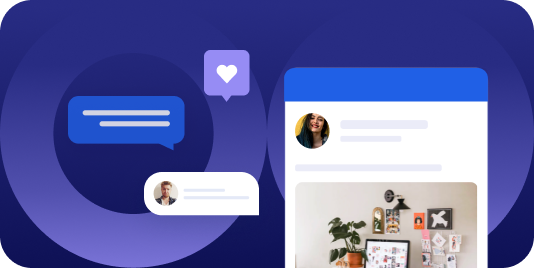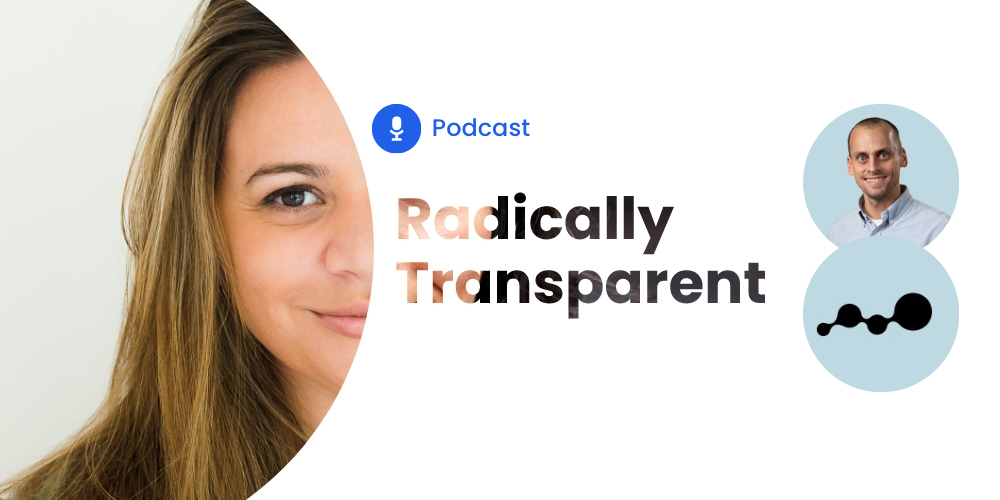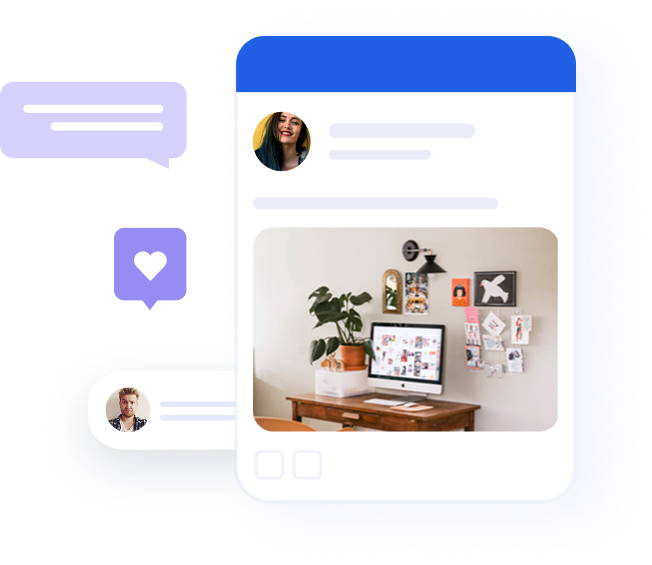From scroll to sale: Using social media to move leads through the funnel

Table of contents
Plenty of B2B companies invest heavily in content like blog post optimization, ads, and webinars, but still struggle with a familiar problem: leads get stuck. They discover your brand, maybe even follow you on LinkedIn, but they don’t move. They don’t click, let alone convert.
One of the reasons this happens is that most social content is built for visibility, not velocity. It may generate likes or impressions, but it’s not designed to move leads forward. Even well-crafted content will fail to spark intent or drive action if it’s not the right content for that particular stage in the funnel.
To accelerate lead movement, your social media strategy needs to go beyond engagement and work as a core part of your marketing funnel. That means designing content not just to attract eyeballs, but to draw potential buyers closer to becoming paying customers.
This isn’t about flooding feeds with sales pitches. It’s about mapping social content to each stage of the marketing journey: top of the funnel (awareness), middle of the funnel (consideration), and bottom of the funnel (conversion).
In this guide, we’ll show you how to use social media to guide leads down the funnel. And we’ll back it up with real B2B case studies that prove what works, why it works, and how it drives measurable improvements in engagement, pipeline, and conversion rate.
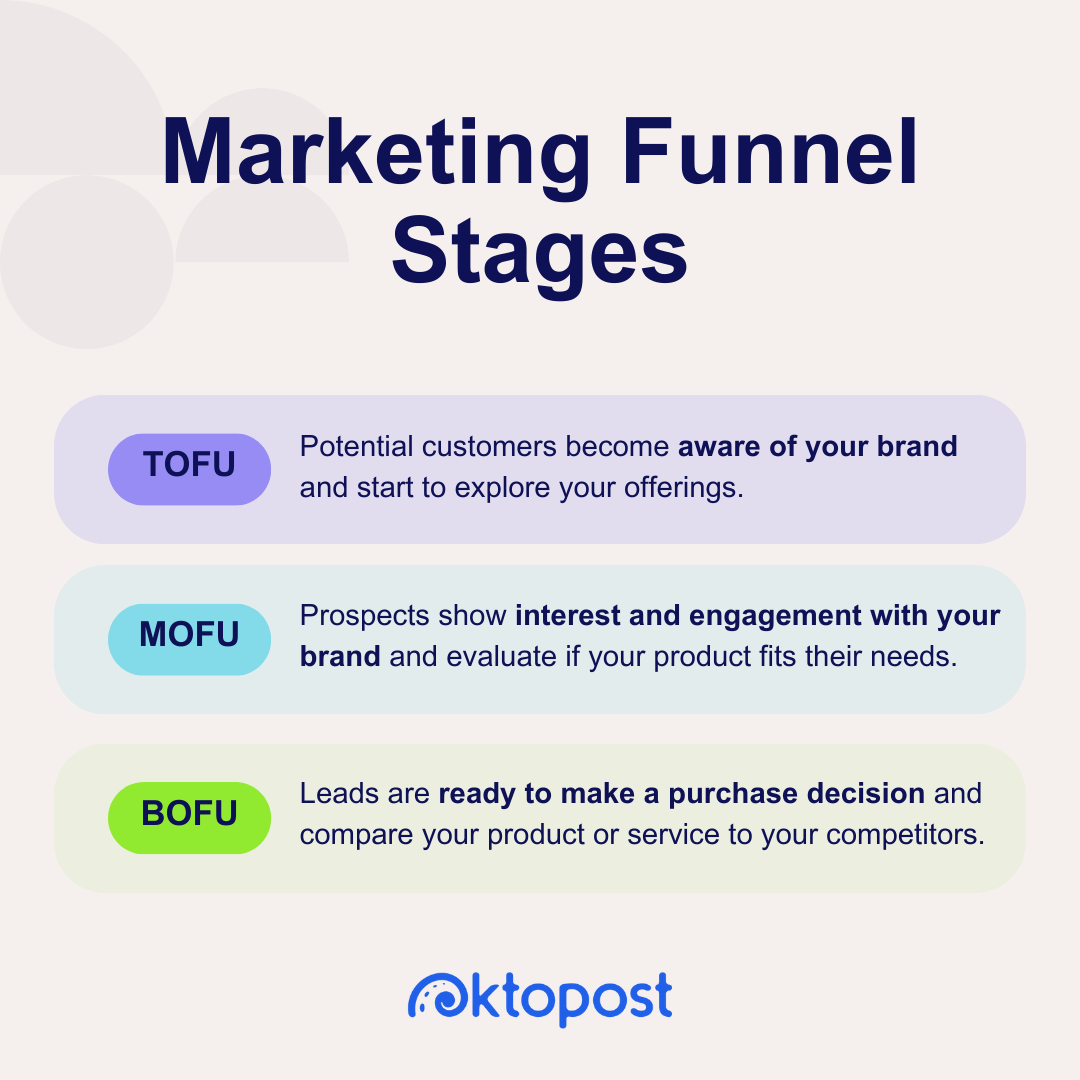
Top of the funnel: Build awareness that leads somewhere
The top of the funnel (ToFu) is where it all begins. This is the awareness stage. At this point, your potential buyers aren’t ready for a pitch. They’re just trying to solve a problem or better understand an opportunity. That’s your cue to show up early with value, but not a hard sell.
At this stage, your social media strategy should focus on building familiarity and establishing trust by sharing relevant, insightful content that reflects your expertise. This means producing content that’s easy to consume, educational, and highly shareable. That could be blog posts, short videos, bite-sized industry takes, infographics, or even polls. The point isn’t to convert on the spot, which is unrealistic anyway. It’s to make the right first impression.
Talk, but also listen
At the top of the funnel, social listening and comment engagement are crucial for success. When brands respond to questions, repost insightful comments, and actually participate in their industry’s conversations, they become leaders, rather than just another logo in the feed. That trust is what fuels long-term lead generation and pipeline growth.
How OSG turned awareness into a traffic surge
OSG, a global customer engagement provider, needed to reposition its brand and connect with new buyer personas. With the help of Oktopost, they launched an employee advocacy program that turned internal experts into external influencers. By amplifying strategic content across LinkedIn and syncing their outreach with Salesforce, they achieved a 540% increase in social traffic, and one-third of that traffic came from employee-shared posts.
When it comes to awareness, reach matters. But credibility is the key. And when done right, ToFu content can spark the kind of engagement that carries leads through the funnel.
Middle of the funnel: turn interest into intent
Once leads are in the middle of the funnel, you’ve earned their attention, but not yet their trust. At this stage, buyers are actively evaluating whether your product or services are the right solution to their problem. The job of your content here is to make that answer easy.
Your marketing strategy should shift from broad brand awareness to clear differentiation. Focus on showing how your solution works, who it’s for, and what kind of outcomes it delivers. This is where case studies, product explainers, webinars, and whitepapers shine. Informing happened at the top. In the middle, you’re moving prospects from casual followers to seriously engaged buyers.
On social media, that means being proactive. Share behind-the-scenes looks at how your offering solves real-world challenges. Encourage your team to post firsthand about use cases and product value. Pin product tutorials. Post clips from your webinars. Start threading in smart, well-timed calls to action that point users to deeper content or landing pages. Be helpful, not aggressive. That lays the groundwork for confident purchase decisions later.
You can also learn a lot from your prospects by paying attention to social signals, likes, shares, comments, reposts, and clicks, especially when they engage with employee posts. These interactions aren’t just vanity metrics; they’re indicators of buyer intent. And with the right tools, they can be tied directly to CRM data to help your sales team prioritize outreach.
How Kainos used social data to score real leads
Kainos, a digital technology provider, knew its traditional lead scoring model wasn’t capturing the full picture. They turned to Oktopost to integrate social engagement data into their Marketo and Microsoft Dynamics. With a unified view of engagement, they could track how prospects interacted with social content and use that behavior to qualify leads.
These efforts led to a 581% increase in ROI, 16% jump in engagement, and over 550% growth in reach during two major partner events. More importantly, their sales team had a clearer idea of who was most likely to convert.
The middle of the funnel is where you identify the signals that show your audience is ready to move towards becoming a paying customer.
Recommended for further reading
Bottom of the funnel: Convert interest into action
You’ve made it to the bottom of the funnel. This is where deals can stall. Your prospects are now highly informed, actively comparing vendors, and possibly navigating an internal approval process. At this stage, your content and messaging need to do one thing: convert.
That means your social media strategy should shift toward product-specific messaging and social proof. Show (not just tell) how your offering performs in real business scenarios. Live product demos, detailed customer case studies, FAQ-style content, and feature deep-dives all work well here.
This is also a prime opportunity to use social as a direct conversion driver. Promote limited-time offers, extended trials, or buyer-specific discounts. Create tailored CTAs that lead directly to landing pages optimized for conversion. And don’t underestimate the power of transparency—address pricing, comparison questions, and even objections head-on.
This is also where social listening becomes a competitive advantage. Monitor conversations not just about your brand, but your category. Spot opportunities to engage leads in real-time, especially when they’re asking about solutions like yours.
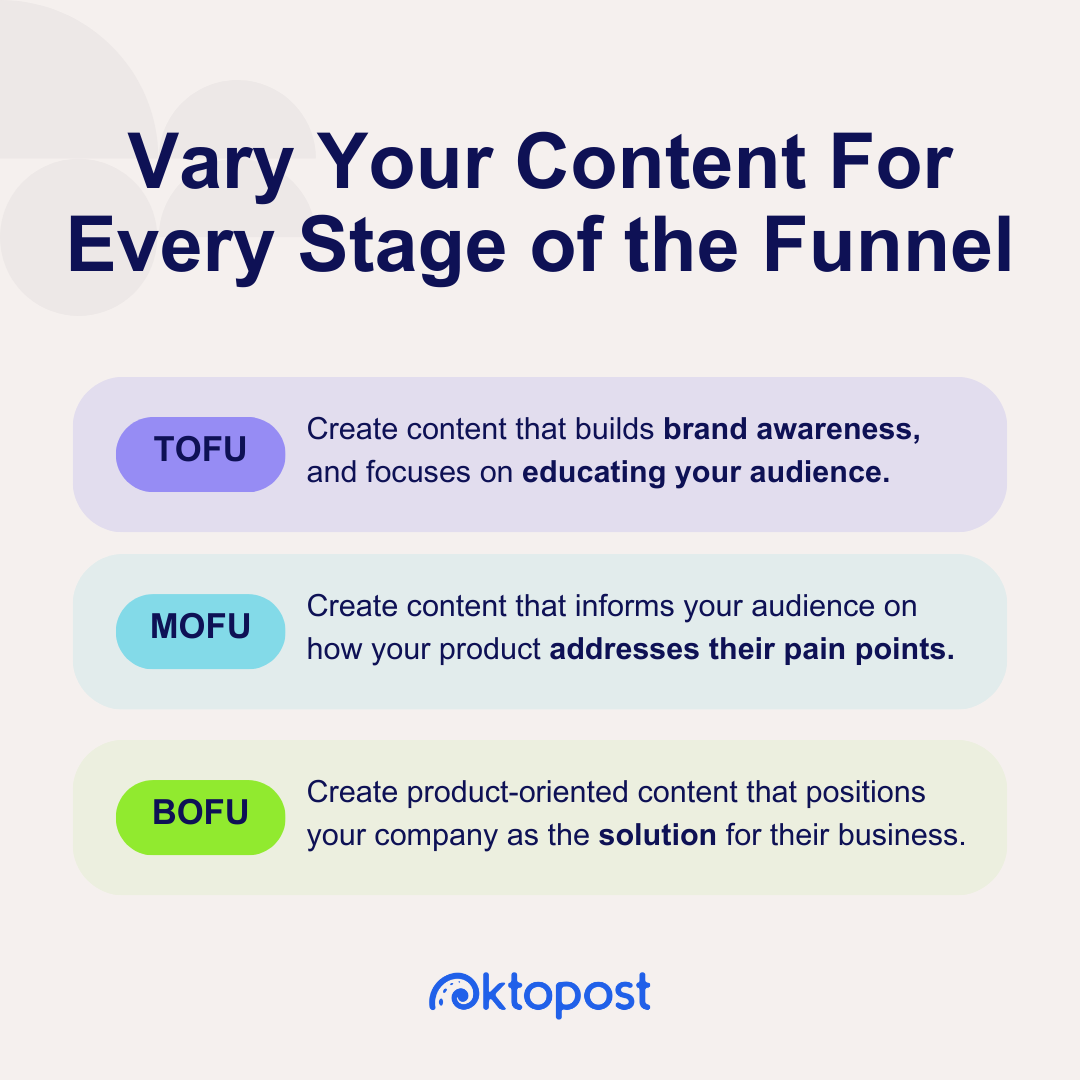
How Planview turned social engagement into revenue
Planview, a work and resource management company, struggled to unify its social media efforts across multiple tools and teams. By adopting Oktopost’s centralized platform, they streamlined content distribution, aligned employee advocacy with brand goals, and tracked engagement more meaningfully.
The impact was immediate. They saw a 22% increase in lead generation, a 75% spike in click-through rates, and a 61% growth in posting volume. Just as crucially, they were able to match social interactions with CRM data, qualifying leads faster and handing off sales-ready prospects with confidence.
At the BoFu stage, what you post on social media isn’t just branding. It’s what convinces a stakeholder to click, book, or buy.
Closing the loop: Make social media count where it matters most
Most companies still view social media as a channel for brand awareness. The smart ones treat it as a conversion engine. When you align your social media strategy with your marketing funnel, every post becomes a revenue lever.
Done right, social can boost your conversion rate, shorten sales cycles, and create more loyal customers. But that only happens when your data, tools, and teams are aligned.
To truly move leads, you need a centralized platform connecting engagement data with your CRM, your marketing automation, and your lead scoring. When your social signals feed directly into how you segment, prioritize, and nurture leads, you
Because in B2B, the brands that win on social aren’t the loudest. They’re the ones who know what stage their buyers are in and show up with the right content at the right moment.
Ready to move faster down the funnel? Let’s talk.
